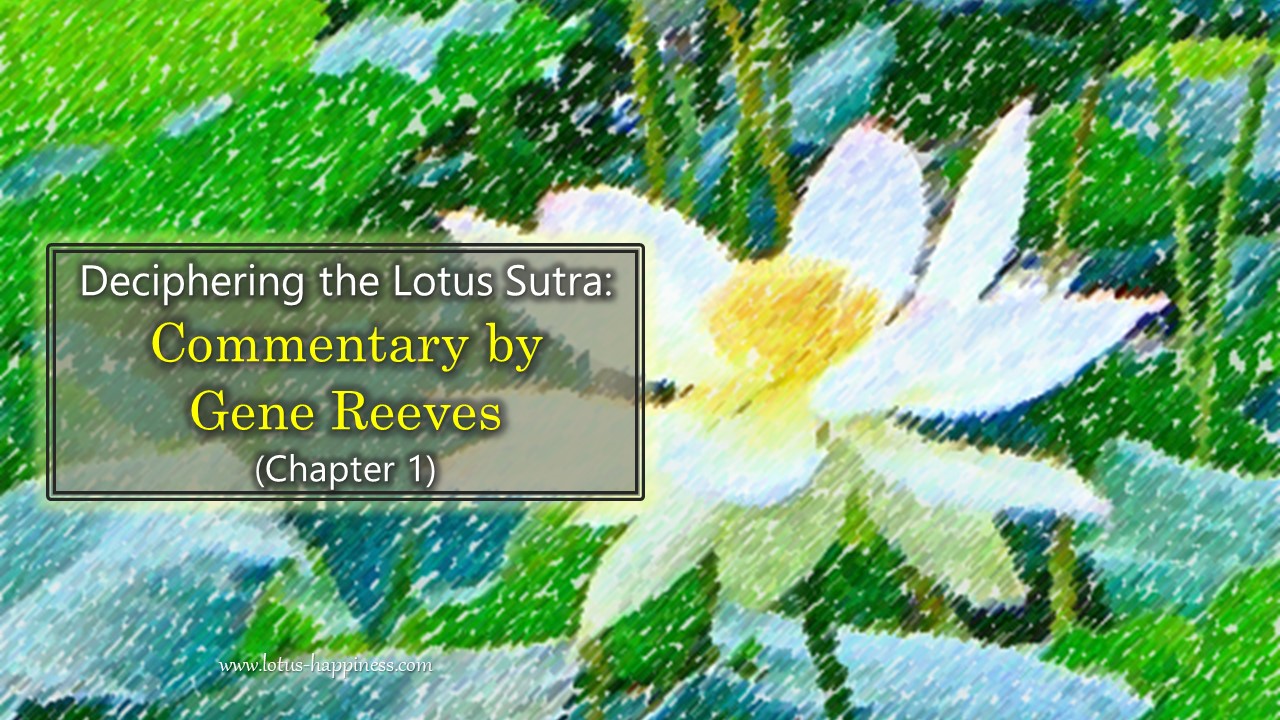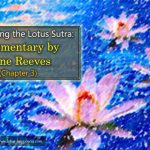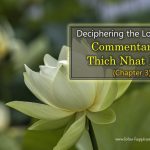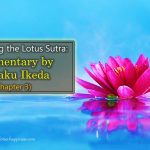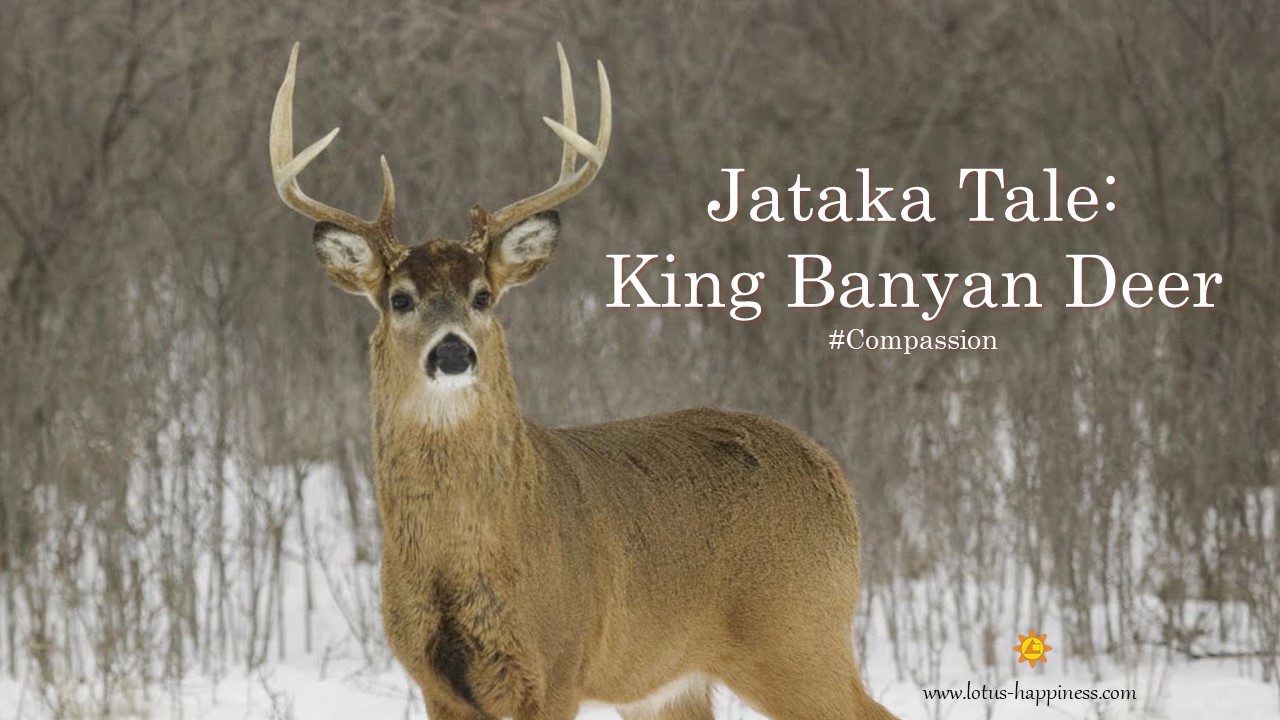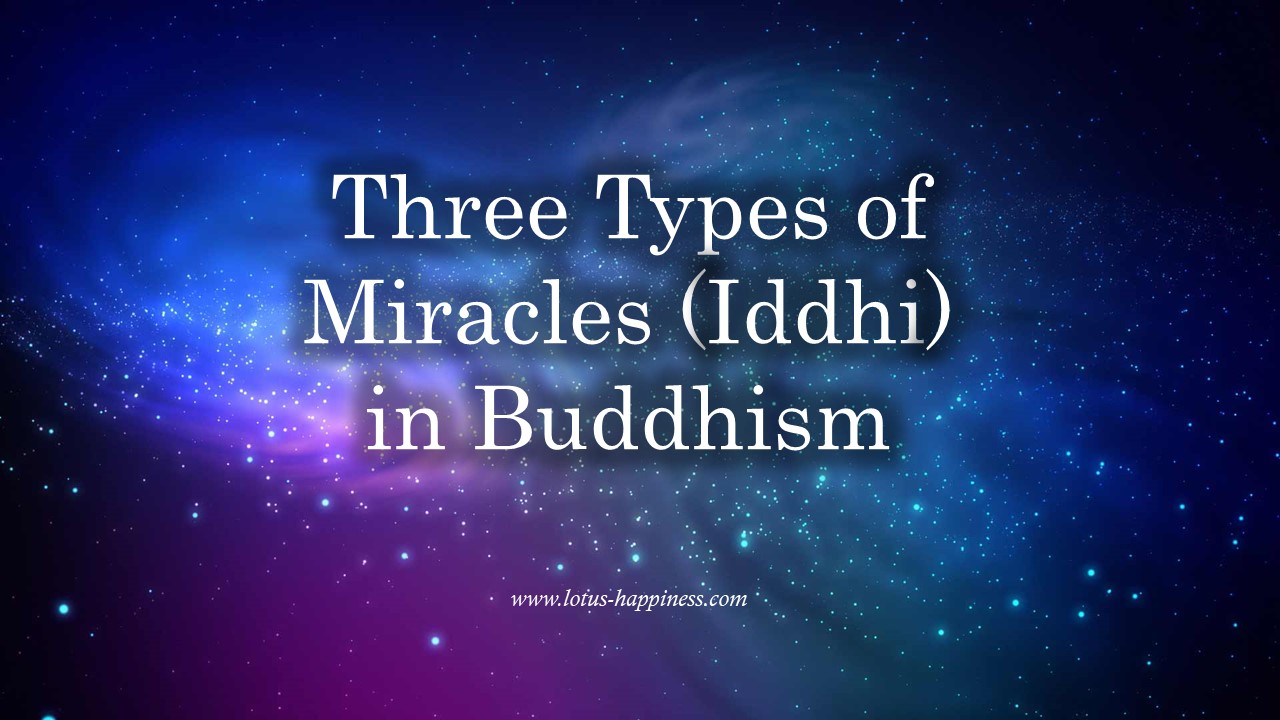Deciphering the Lotus Sutra:
Commentary by Gene Reeves (Chapter 1 – GR 1.1)
#1 – The Lotus Sutra is For All Living Beings
Monks and nuns, laymen and laywomen, gods, dragons, satyrs, centaurs, ashuras, griffins, chimeras, pythons, humans and nonhumans, minor kings, and holy wheel-rolling kings, and others are all addressed by the Buddha in Chapter 1.
What we should understand from this is that Buddha Dharma is not only for Buddhists, not only for those people who are good, and not only for human beings. Even gods and other heavenly creatures come to hear the Buddha’s teaching.
#2 – Sharing the Dharma
In this story, the Buddha says he intends “to teach the great Dharma, to send down the rain of the great Dharma, to blow the conch of the great Dharma, to beat the drum of the great Dharma, and to explain the meaning of the great Dharma.”
The meaning of the conch and the drum is not so obvious. Almost certainly they are instruments used to lead an army in battle, to inspire and motivate soldiers to move forward.
Similarly, those who receive the Dharma Flower Sutra in their hearts are not merely comforted by it; they are motivated to practice it passionately and to share it with others. Buddhism is in this sense a missionary religion. We can also think of the sound of the conch as representing the beauty of the Dharma, while the sound of the drums represents the power of the Dharma.
#3 – We are both Teachers and Learners
That heavenly flowers rain both on the Buddha and on the whole assembly is very important. It means… there is equality among all of those in the congregation, including the Buddha. This shows that there should be no sharp distinction between teachers and learners.
While many forms of Buddhism have adopted a kind of system in which some are authorized to be permanent teachers and others to be students, the Dharma Flower Sutra teaches that we should all be both teachers and learners.
#4 – Experience the Dharma with Our Whole Being
Flowers rain from heaven, the earth shakes in the six ways it can shake, drums can be heard in the heavens, the Buddha emits rays of light, etc – which indicate that nature itself is moved by the Buddha. Buddha Dharma is not merely about something in our heads; it is about the whole world. Note also that these omens appeal to different senses – we see light, we see and smell flowers, we feel the earth shake, and we hear drums beating. This means that we are to embrace the Dharma not only with our minds, but with our senses as well, with our whole being.
Source: The Stories of the Lotus Sutra

